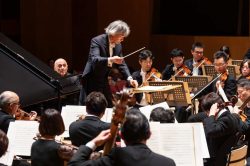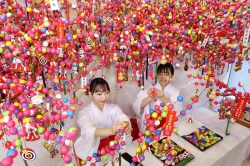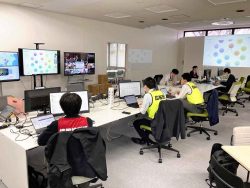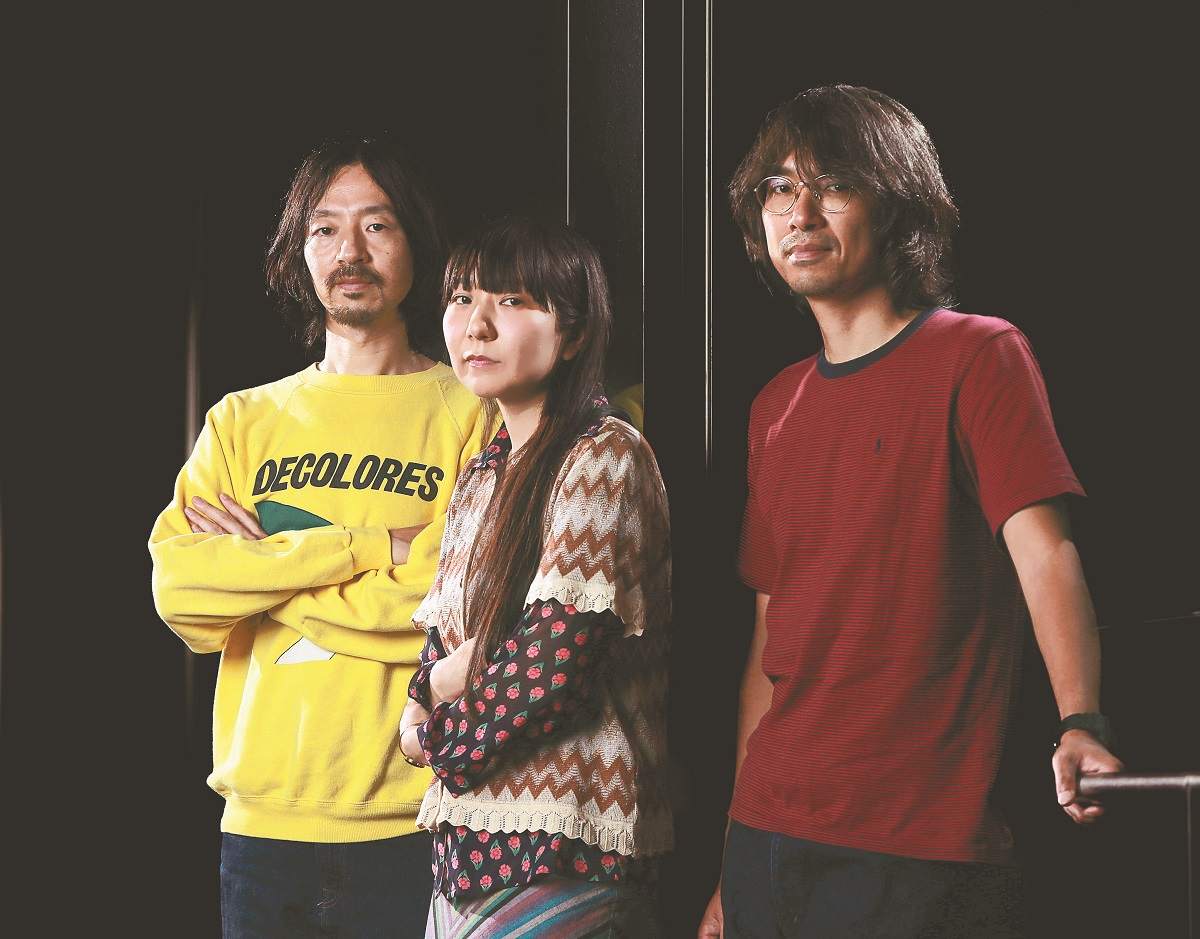
From left: Taiyo Someya, Kaori Sakakibara and Yusuke Nagai of Lamp
12:00 JST, August 23, 2024
Do you know Lamp, the Japanese band that is now enjoying huge popularity overseas?
The trio consists of two vocalists, Yusuke Nagai and Kaori Sakakibara, and guitarist Taiyo Someya. Their music career spans nearly a quarter of a century, starting in 2000, when the band first formed. For most of that time, their popularity was generally limited to Japan’s indie music scene.
In recent years, however, streaming services have helped them be “discovered” by the rest of the world. Last year, three of their songs made it into Spotify’s list of the service’s 10 most-streamed Japanese songs from the 2000s.
In late August, the trio will kick off their first tour of North America, which will last until early October. Lamp will give 24 performances in the United States and Canada. The band will appear as the main act at most of the concerts, while at others they will appear as a supporting act for U.S. singer-songwriter Mitski.
It will likely be an exhausting tour for the three, who will be traveling from city to city on a large bus loaded with beds.
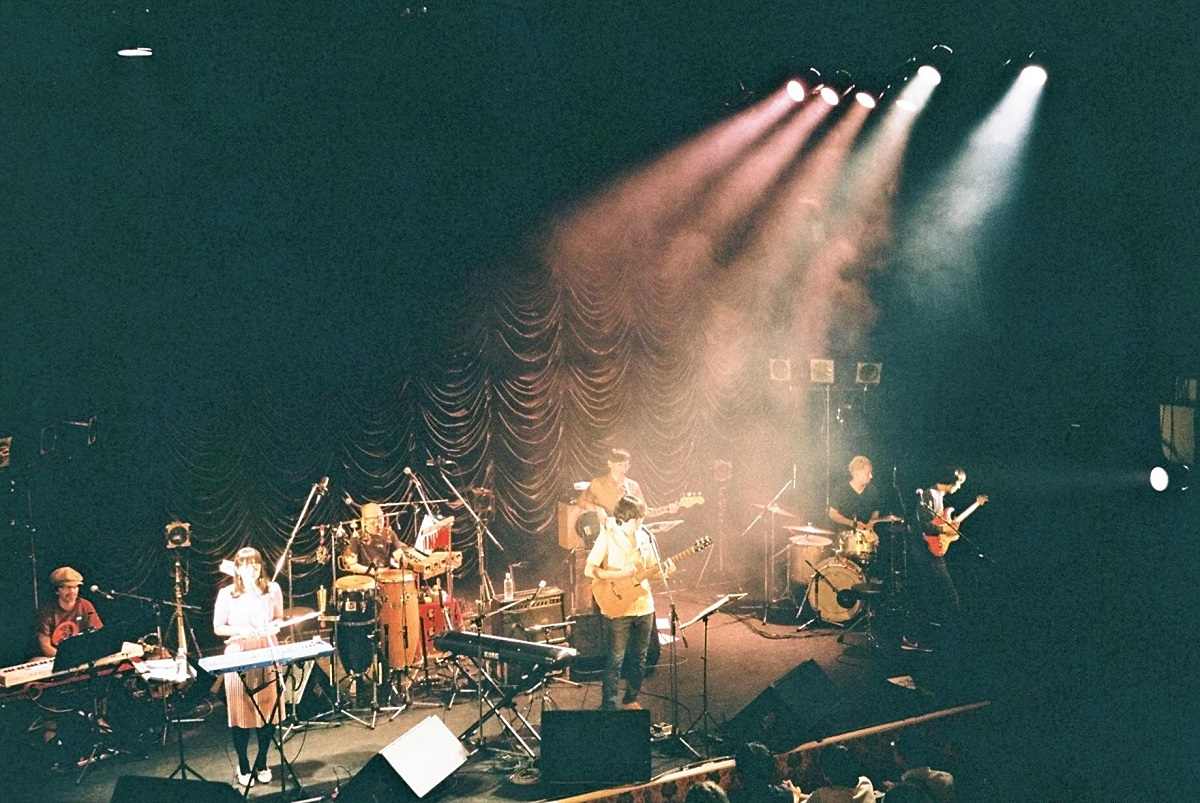
“I’d never thought this would be awaiting us at this age,” Nagai laughed. I grew up listening to American music, so it feels odd that I’m going there myself.”
“It’s like ‘Magical Mystery Tour,’” Sakakibara said nonchalantly, as if it had nothing to do with her.
Lamp’s music feels like something out of a dream. The band’s sound is a blend of various kinds of music, from 1960s and 1970s pop and rock to bossa nova and folk-rock songs. Though the trio are currently preparing for the big tour, the main axis of their activities is not concerts but the production of recorded music.
So far Lamp has released 10 albums. The band does not belong to any artist agency or record company, so the members handle everything by themselves, from album production and sales to management of the band.
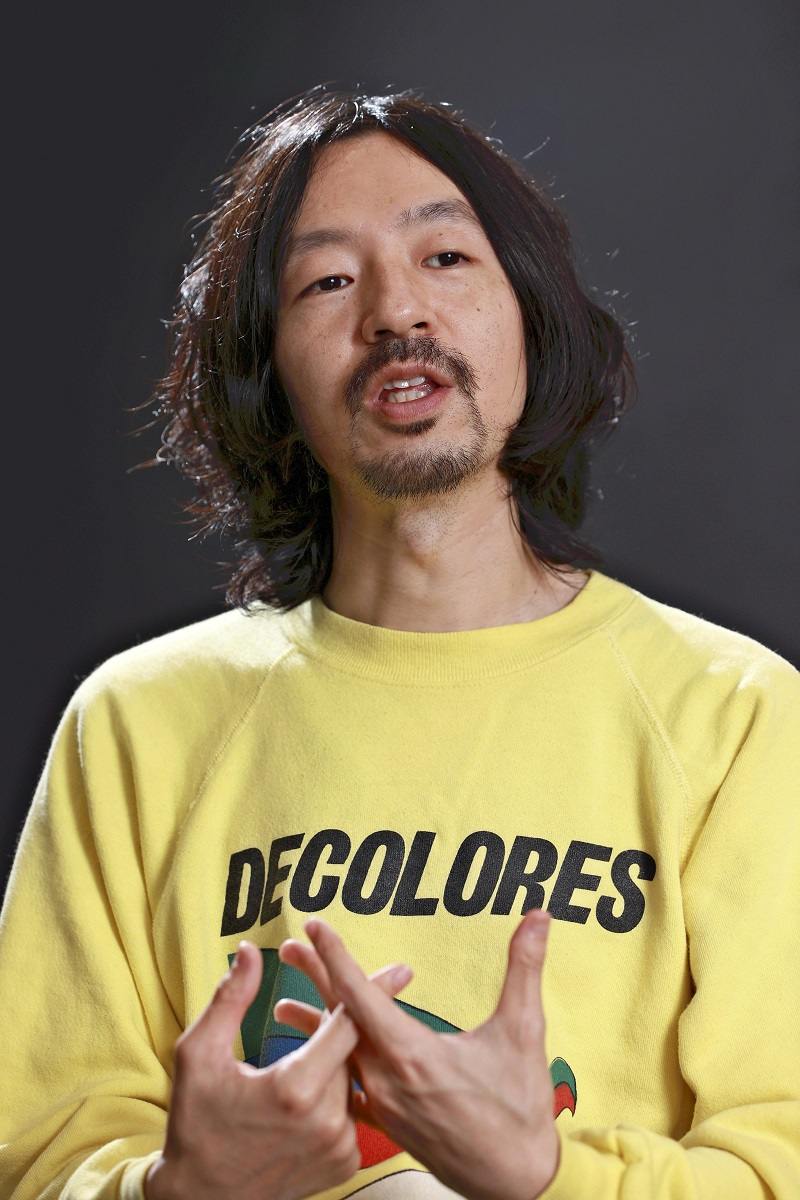
Taiyo Someya, 44, plays guitar and composes songs. What he listened to as a student: “My father ran a studio, and I used to listen to records he played, such as Jimi Hendrix and the Rolling Stones. When I was in high school, I listened to both [contemporary] rock bands like the Smashing Pumpkins and [older music] like the Beatles. When I was in university, I learned about various kinds of music, like bossa nova, from friends.”
According to the three, their musical activities are very personal to each of them.
“Nagai and I write the songs ourselves, and Kaori writes lyrics for them,” Someya said. “We never get together just for practice.”
Each of them brings the work they have done on their own to a recording studio, and they put together the final product — That is their style.
“We’ve been doing what the Beatles were doing — completing songs in the studio,” Nagai said. “Since we didn’t know what [other] professional musicians were doing, we thought that was the normal thing to do.”
An excellent blend
Lamp began as a band Someya and Nagai formed after getting to know each other in a folk-rock music interest club at their high school.
“The songs Someya created were not really to my liking,” Nagai recalled, a little too frankly. “When others were playing rock, which was hip at the time, he was writing original songs with original lyrics in Japanese, which I thought were awful.”
However, Someya’s attitude of making his music work without being influenced by what others say has stayed with him to this day.
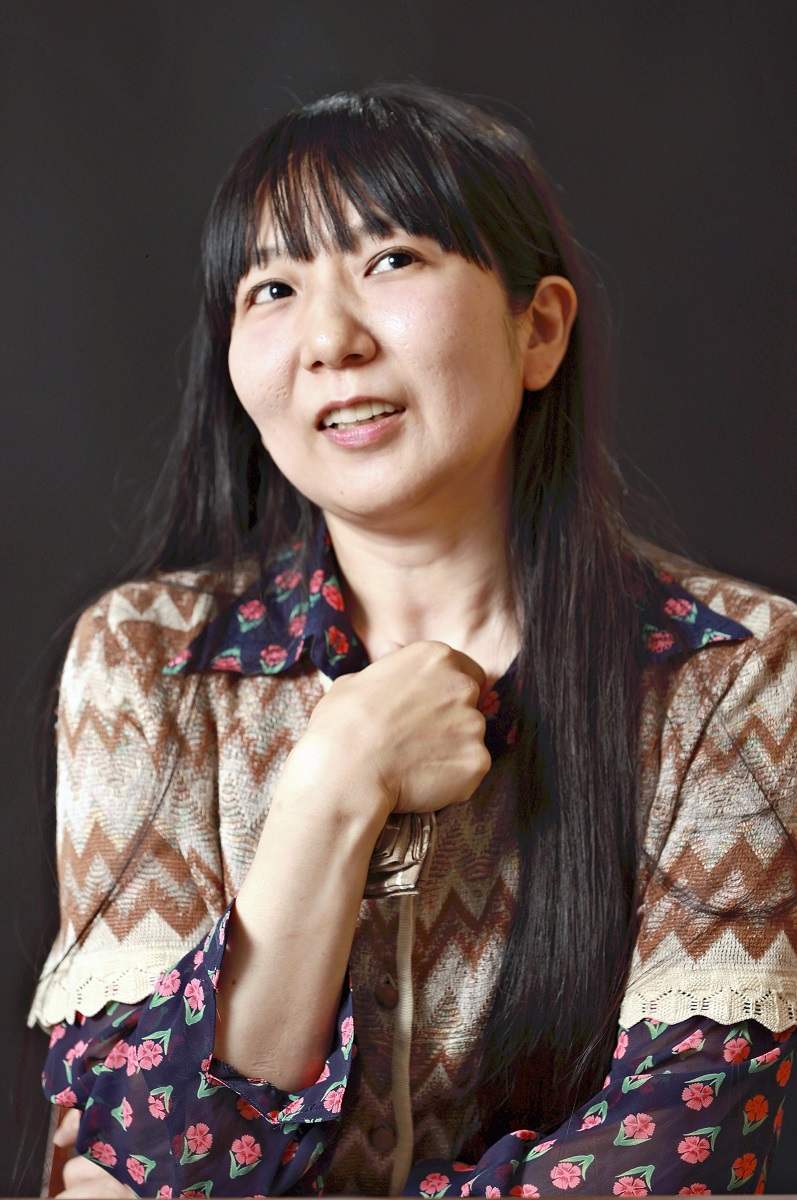
Kaori Sakakibara, 44, sings and writes lyrics. What she listened to as a student: “Shibuya-kei (Shibuya-style) music, the Tulip, Simon & Garfunkel, the Cardigans, bossa nova and so on. I often listened to a compilation album titled ‘Softrock Drivin’,’ which featured many great old Japanese songs.”
Someya and Nagai went to the same university and met Sakakibara through a mutual friend.
“We heard that [our friend] knew someone who could sing and play the flute and owned an accordion,” Someya said. “I called her on the spot and met her that day, and we decided to form a band together.”
The three have been together ever since.
“It’s difficult to make a band work when the members have different tastes in music,” Someya said. “After all those years, our music has blended together to become something like a living being, so much so that we’ve become increasingly unable to share it with other people.”
The group’s name, Lamp, comes from the lyrics of a song by Simon & Garfunkel, Sakakibara’s favorite group.
In 2003, Lamp released its first album, “Soyokaze Apartment Room 201.” It was followed by “Koibito e” (“For Lovers”) in 2004 and “Lamp Genso” (“Lamp Phantasma”) in 2008, which were to become worldwide hits through streaming services years later.
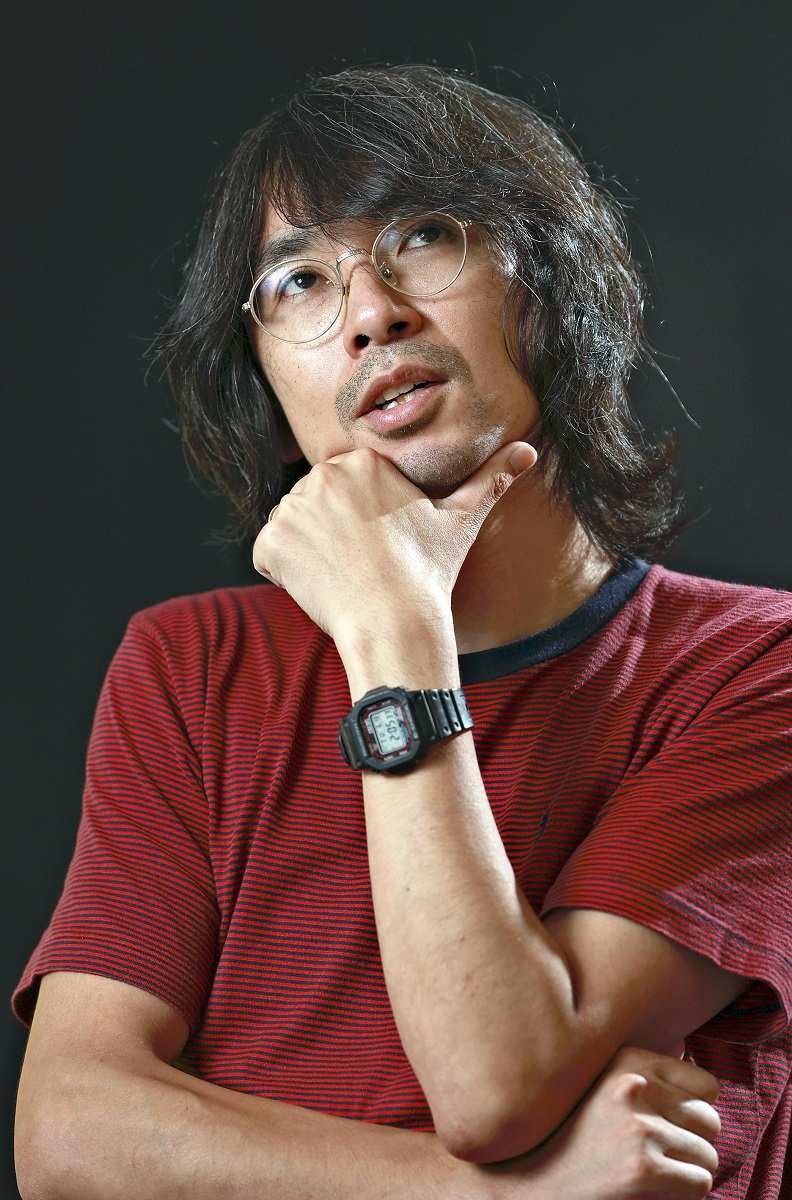
Yusuke Nagai, 44, sings and composes songs. What he listened to as a student: “On New Year’s Eve in 1995, I watched a TV show about the Beatles, which gave me a shock and caused me to practice the guitar really hard. Then I met Someya. I’ve always liked choral music since I was a child. I think my compositions are influenced by music with great harmonies, like the Beach Boys.”
But at the time, CD sales were weak. It took “Lamp Phantasma” 10 years to sell enough copies to recoup its production costs.
“I was thinking about the possibility of our songs being listened to after my death, not 10 years or 20 years later,” Someya said.
Sakakibara said she feels like she always just does what she wants to. “I’ve never done anything because it was in vogue,” she added. “I don’t feel any kind of rush at all.”
Just once, Lamp released an album through a major label, 2014’s “Yume” (“Dream”).
“Whenever we had meetings [with the label], I felt like something was off,” Someya said. The band immediately went back to being independent after that.
The core of their music
It has been only more recently that Lamp’s music has come to be listened to by people the world over.
Around 2015, “A Toshi no Aki” (“Autumn in City ‘A’”), from the album “Dream,” gained attention when it was introduced on a social news site in the United States. When the song started streaming in 2017, it made it into the hit charts.
In 2021, a video clip using “Yume Utsutsu” (“Half Asleep”) from the album “Lamp Phantasma” went viral on TikTok. According to Spotify, the clip spread widely because it fit with the dreamy chill pop scene, which has had lasting popularity overseas.
Last year, Lamp was ranked 11th among Japanese artists whose works were played the most times outside of Japan. It was a big feat considering the list featured many top stars, with Yoasobi ranked No. 1 and Kenshi Yonezu at No. 4.
In fact, even before Lamp made such a big splash outside Japan, Someya was seriously considering venturing overseas.
“I’ve come to think that who we ultimately want to bring our music to are strangers, some people in the future in some other country,” Someya said. “We like foreign music ourselves, too.”
“For Lovers” and “Lamp Phantasma” are particularly popular abroad.

“Those songs that were once marked as failures in terms of sales are now explosively popular overseas,” Nagai said. “I have a feeling that the core of what we’re communicating has reached people.”
In 2018, Someya made the following entry in his blog:
“I’m thinking of quitting the part-time job I’ve been doing since my 20s by the end of this year, as I want to focus solely on music from next year.”
The members of Lamp still do not belong to any record company or artist agency. Yet they are able to make a living through profits from streaming services and other activities, which is giving hope to young and talented people who are trying to make names for themselves now.
A new album
In June, Lamp released the CD edition of the band’s latest album, “Hitoyo no Pathos” (“Dusk to Dawn”), which first came out on streaming services in October. With 20 tracks spanning 75 minutes, it is the longest Lamp album to date and feels big, as if it is intended to analogize the passage of time from dusk to dawn or even a person’s life.
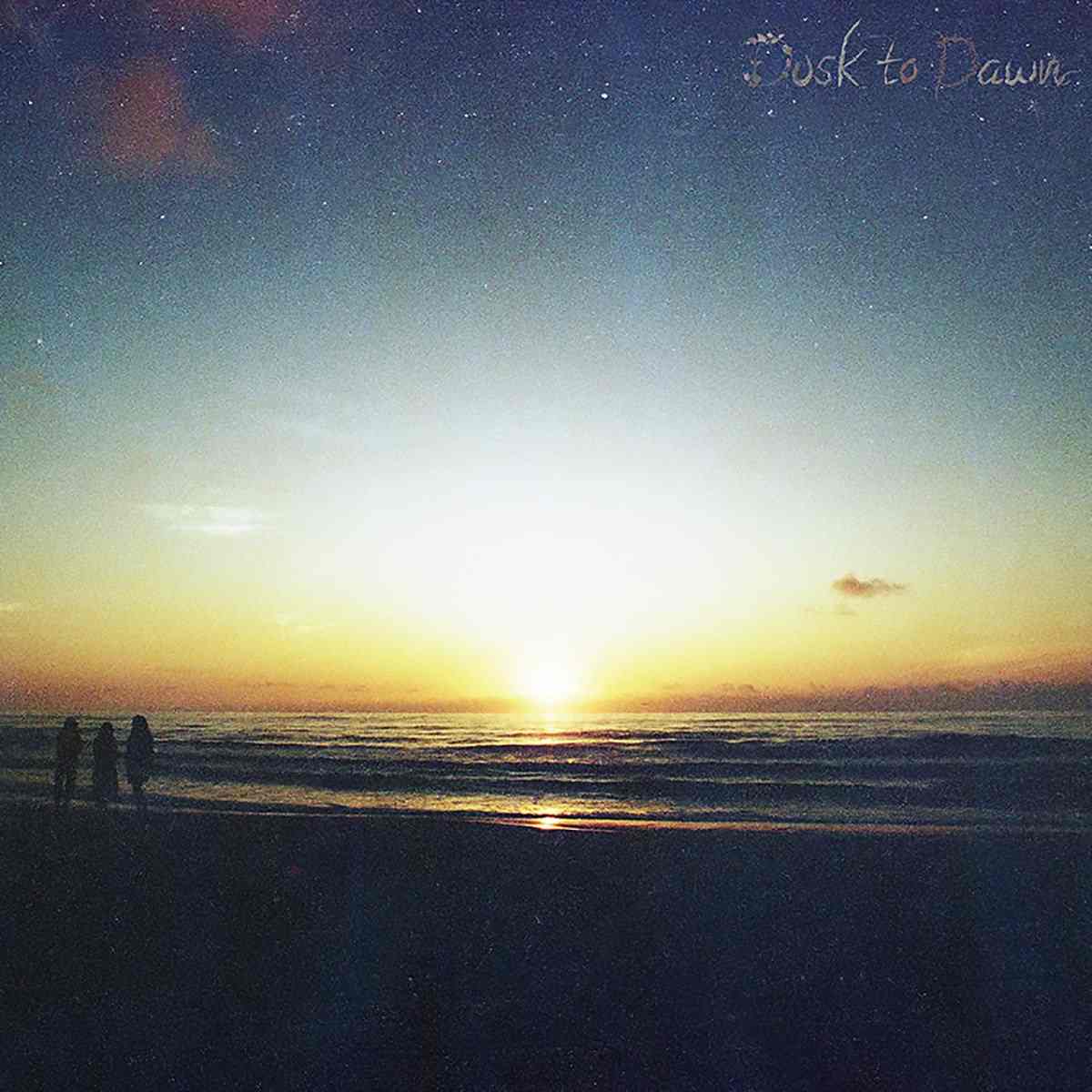
"Culture" POPULAR ARTICLE
-
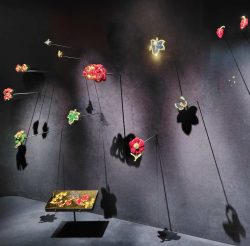
Van Cleef & Arpels Dazzles with Art Deco Artisanry at Tokyo Exhibit
-
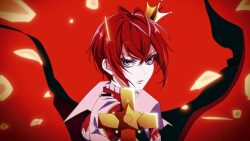
Disney’s ‘Twisted-Wonderland’ Animated Series Puts Villains in Spotlight: New Show Features School Inspired by Classic Disney Films
-

Japan Plans to Distribute Manga Overseas Via New Platform
-

Japanese Craftsman Produces Beautiful and Durable Bags Made of Wood
-

Ayumi Hamasaki’s Shanghai Concert Canceled Day Before Schedule as Part of Beijing Backlash
JN ACCESS RANKING
-

Keidanren Chairman Yoshinobu Tsutsui Visits Kashiwazaki-Kariwa Nuclear Power Plant; Inspects New Emergency Safety System
-

Imports of Rare Earths from China Facing Delays, May Be Caused by Deterioration of Japan-China Relations
-

University of Tokyo Professor Discusses Japanese Economic Security in Interview Ahead of Forum
-

Japan Pulls out of Vietnam Nuclear Project, Complicating Hanoi’s Power Plans
-

Govt Aims to Expand NISA Program Lineup, Abolish Age Restriction



